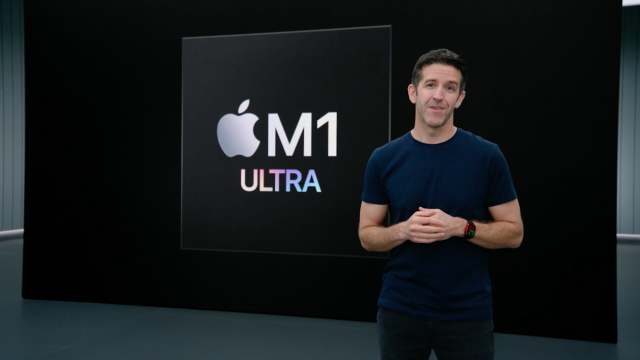Apple surprised the tech world today by unveiling the M1 Ultra, its most powerful chip yet. Powering the new Mac Studio, the Ultra sits at the top of the stack ahead of the M1, M1 Pro, and M1 Max.
Apple explained how using two separate processors on a motherboard is inefficient. With the M1 Ultra, the company fused together two M1 Max dies using a custom-build architecture, a technique that results in roughly double the performance. Apple calls this architecture “UltraFusion” and it connects with 2.5TB/s of interprocessor bandwidth between the two die while using less power than the alternative. Apple claims the chip, which has 114 billion transistors, is around 8x faster than M1.

This multi-die architecture supports memory speeds of up to 800GB/s, or more than 10 times the latest PC desktop chip, and can be paired with up to 128GB of unified RAM. As for the specs, this new hero chip has 20 cores comprised of 16 performance and 4 high-efficiency cores along with a 64-core GPU and 32-core Neural Engine for AI processing.
Apple made some eye-opening performance claims at its “peek performance” event. When compared to the fastest 16-core desktop PC chip, the M1 Ultra supposedly delivers 90 per cent faster performance while using 100W less power. When it comes to graphics, Apple says it delivers faster speeds than the best discrete graphics cards around while using 200W less power. If accurate, those are some groundbreaking figures.
The M1 Ultra will debut in the Mac Studio, Apple’s new high-performance compact desktop, but will likely make its way to other premium products, like the Mac Pro or high-end iMac. We will hopefully receive a Mac Studio to review in the coming days or weeks (the computer launches on March 18), at which point, we will put this M1 Ultra to the test and compare it against the best from AMD and Intel.
Read our wrap up of everything Apple announced this morning over here. This article has been updated since it was first published.
